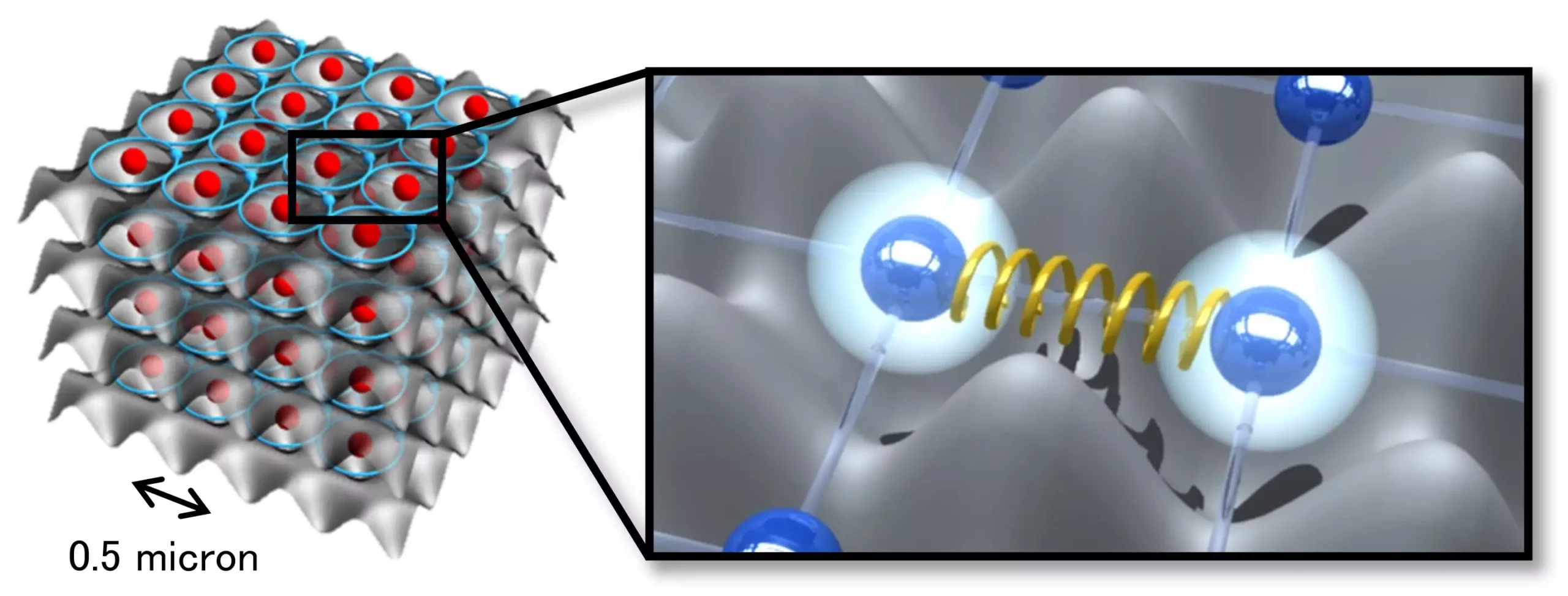The field of quantum technology is rapidly evolving, with quantum computing, quantum simulation, and quantum sensing standing at the forefront of scientific innovation. A critical aspect of these technologies hinges on the phenomenon of quantum entanglement, which refers to the interconnectedness of quantum states across different particles. Recent research conducted by scientists at the Institute for Molecular Science sheds light on the remarkable interplay between electronic and motional states in an ultrafast quantum simulator, using Rydberg atoms as the catalyst. Their findings, published on August 30 in *Physical Review Letters*, signify a significant leap in our understanding of quantum entanglement mechanisms and propose a novel method for simulating quantum systems that incorporate repulsive forces.
Rydberg atoms, distinguished by their massive electronic orbitals, serve as an essential element in generating quantum entanglement within cold-atom platforms. These atoms can occupy higher-energy states, allowing researchers to manipulate and observe their interactions more effectively. The recent study took a bold step in navigating the limitations of distance between Rydberg atoms, traditionally restricted by a phenomenon known as Rydberg blockade, which inhibits nearby atoms from entering the Rydberg state due to strong interactions. By employing ultrafast laser pulses, researchers successfully circumvented this limitation, allowing for greater entanglement and more complex quantum simulations.
In this groundbreaking study, the researchers cooled an impressive ensemble of 300,000 rubidium atoms to a frigid 100 nanokelvin and loaded them into an optical trap that formed an intricate optical lattice with precise spacing of 0.5 microns. The innovative excitation scheme involved the deliberate application of a short pulse laser lasting just 10 picoseconds. By manipulating the quantum state of the atoms, they generated a quantum superposition that intertwined the ground state and the Rydberg state.
Through meticulous observation of the time-evolution of these quantum states, scientists identified a rapid formation of quantum entanglement between the electronic states and the motional states within a mere few nanoseconds—a phenomenon primarily driven by the robust repulsive force acting among the atoms. This force ensures a correlation that establishes whether an atom is in the Rydberg state or not, directly influencing its movement. Remarkably, this entanglement can only manifest when Rydberg atoms are in close proximity, aligning closely with the atomic wavefunction spread in the optical lattice (60 nanometers), facilitated by the unique 0.5-micron distance allowed through ultrafast excitation.
Beyond merely reporting their findings, the authors proposed an advanced method for quantum simulation that implicates the inter-particle repulsive forces, particularly those arising in electron dynamics within materials. By utilizing rapid pulsed excitations, researchers posit that a controlled repulsive force can be implemented, providing unprecedented flexibility in simulating quantum behaviors of particles trapped in optical lattices. This introduces a promising pathway for exploring quantum systems with interactions often deemed too challenging to analyze with conventional methods.
The implications of this research stretch far beyond academic curiosity. An associated research team is devising an ultrafast cold-atom quantum computer that aims to enhance two-qubit gate operations significantly—by two orders of magnitude compared to traditional quantum computers. By exploiting the special properties of Rydberg states to accomplish these two-qubit operations, they are also addressing the detrimental effects of atomic motion that diminish operational fidelity. This research substantially contributes to understanding how electronic and motional state entanglement improves quantum gate interactions.
The revelations made by the Institute for Molecular Science not only advance our understanding of quantum entanglement but also open up theoretical avenues for simulating complex quantum systems through innovative methodologies. The experimental insights gleaned from the interactions of cold Rydberg atoms mark an essential step forward in enhancing quantum computational fidelity, paving the way for more socially beneficial quantum technologies in the near future. As researchers continue to unravel the nuances of quantum states, the potential applications in artificial intelligence, cryptography, and beyond loom larger than ever, heralding a new era of exploration and technological evolution driven by the mysterious principles of quantum mechanics.


Leave a Reply